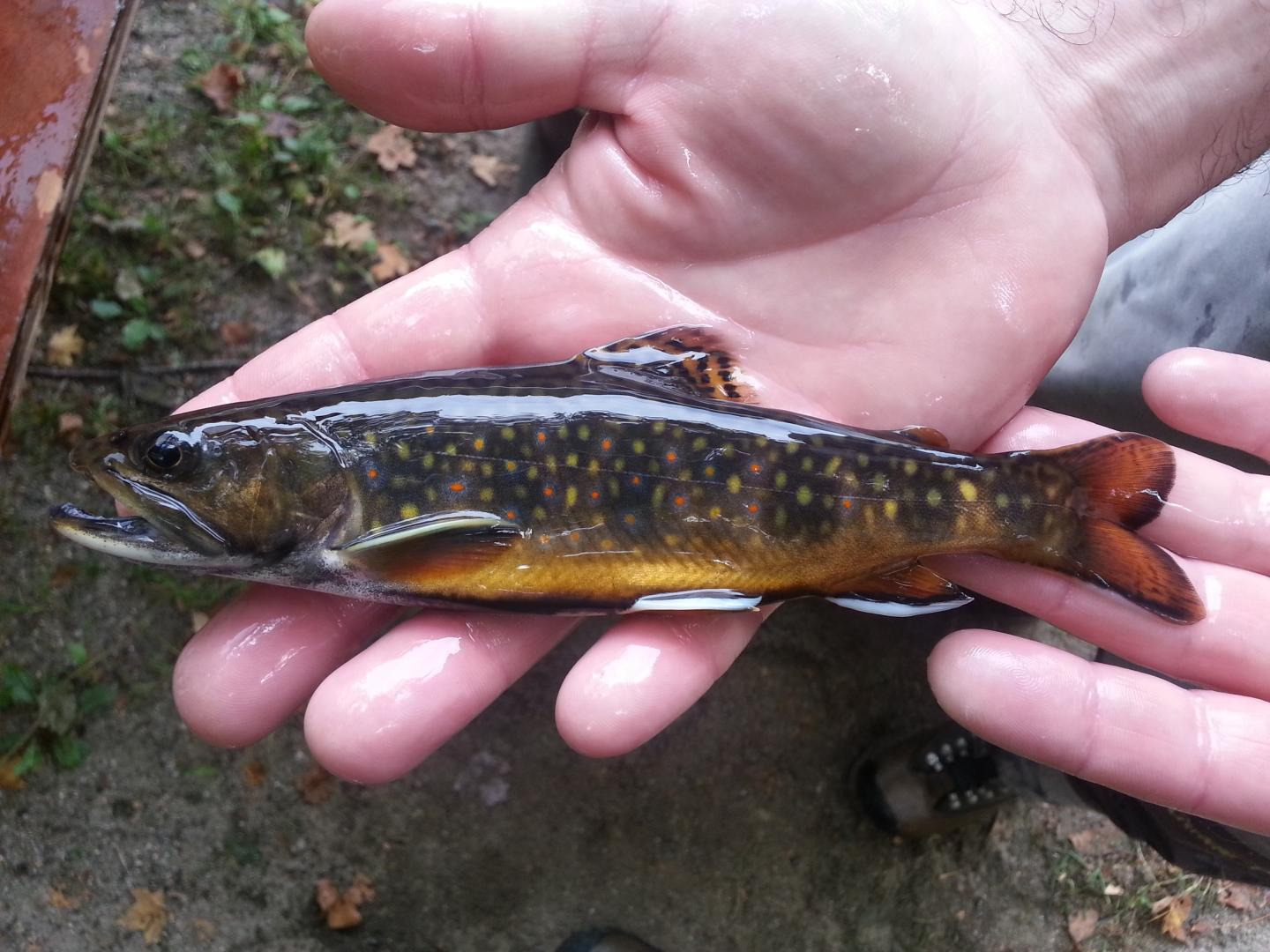
I just ran across this item on the Northern Virginia Chapter of Trout Unlimited. Kirk Smith, a PhD student from George Mason University, spoke to the TU chapter on November 4th about his efforts to reintroduce brook trout into area streams. This guy is doing some really exciting and groundbreaking research to restore local streams to support brook trout.
Some discouraging bits from Kirk’s talk at NOVA TU:
- Only five percent of the original brook trout populations in the United States remain at or near their historic numbers, all of which are in Maine
- Brook trout are often forced out of their natural range in most of the Eastern United States and now survive mostly in headwater streams with limited nutrient resources
- Sediment loading is a significant factor in declining brook trout populations since sediment smothers eggs and larval brook trout and alters stream biodiversity by covering the habitat necessary for macroinvertebrate species
- The depletion of the eastern deciduous forest along with impervious surfaces (e.g., roofs, driveways and roads) and global warming have all contributed to escalating surface water temperatures within the natural brook trout range
I also found some other interesting and related info. The Great Falls Citizens Association website reports that Kirk has proposed reintroducing brook trout to Nichols Run in Northern Virginia Regional Park. That would certainly be exciting if this could be done.
- Difficult Run in Fairfax had, as recently as 20 years ago, brook trout populations ample enough to fish without restrictions (this is incredible to me since I have never heard of brook trout in Fairfax County)
- Over a three-year period at Big Springs in Loudoun County earlier this decade, a project similar to those envisioned by Smith increased the number of brook trout from 0.3 per 100 feet to 30 per 100 feet.
This is one of those things you sometimes daydream about — what if we could reverse some of the damage we’ve done and actually put these fish back in some of the streams they historically inhabited? It’s amazing that this might be possible. I will stay tuned and follow up on this.

